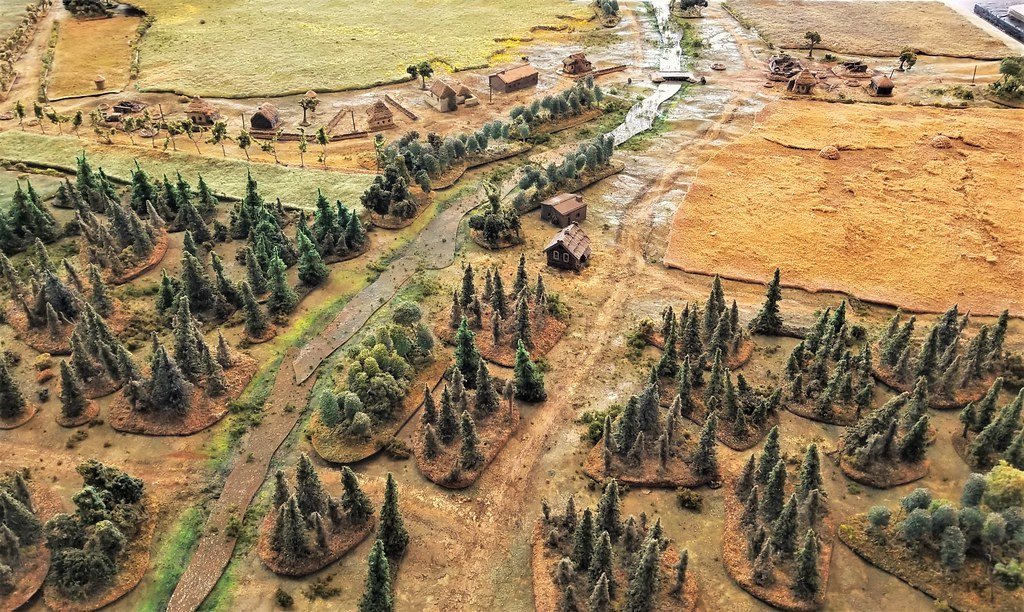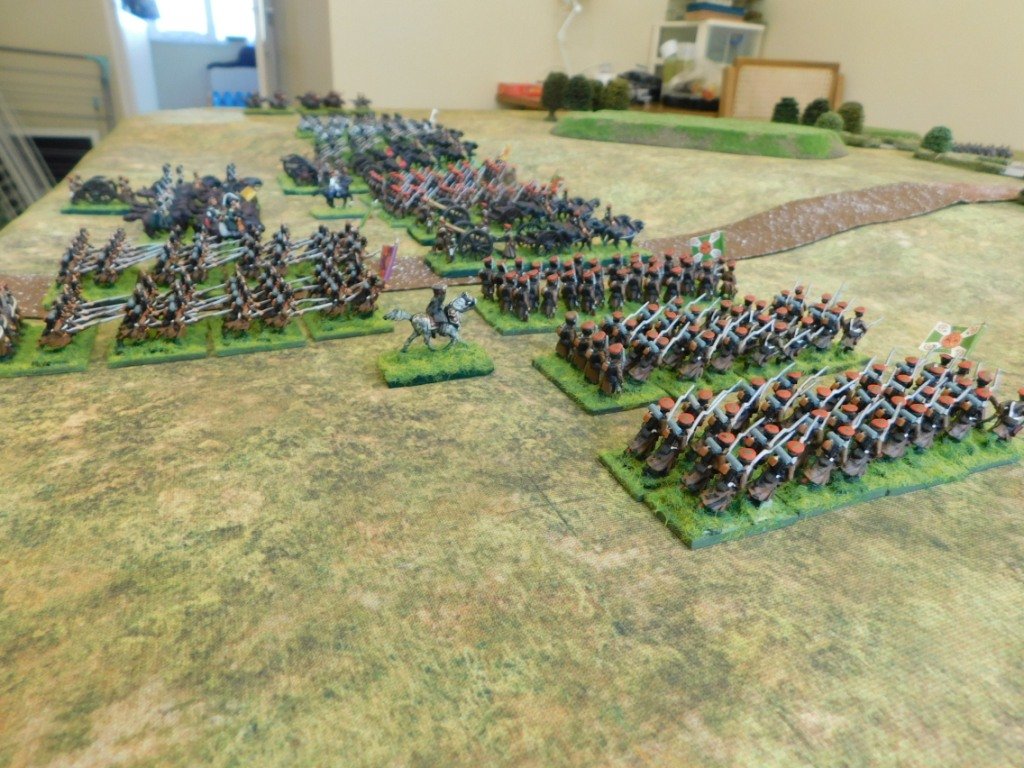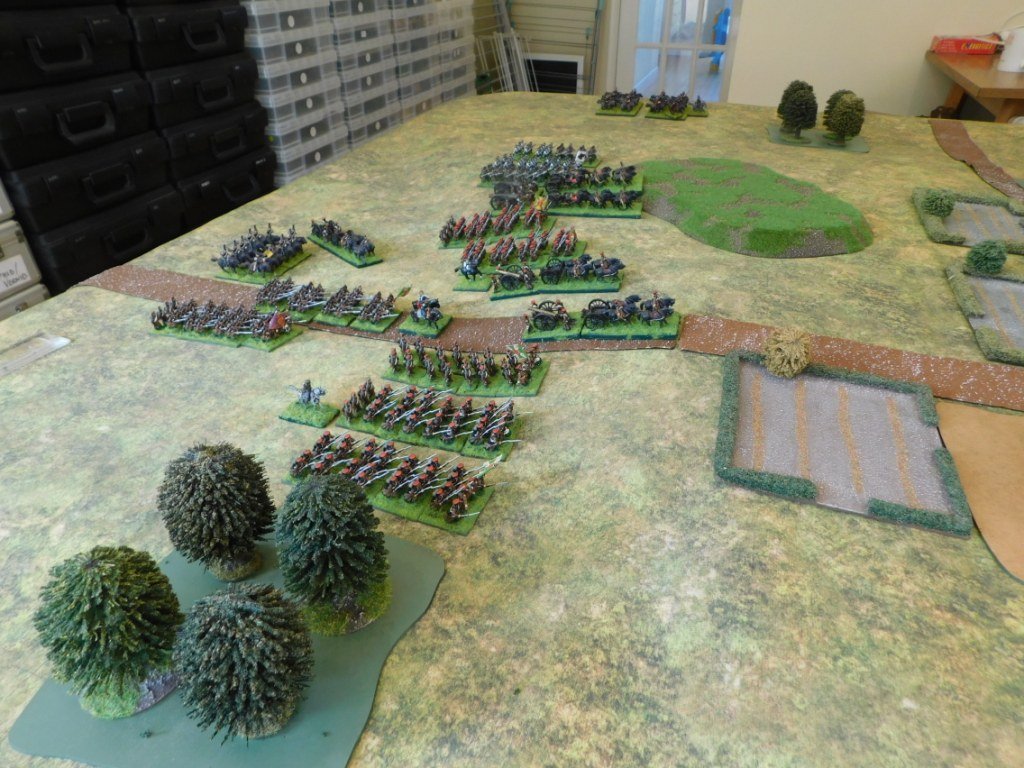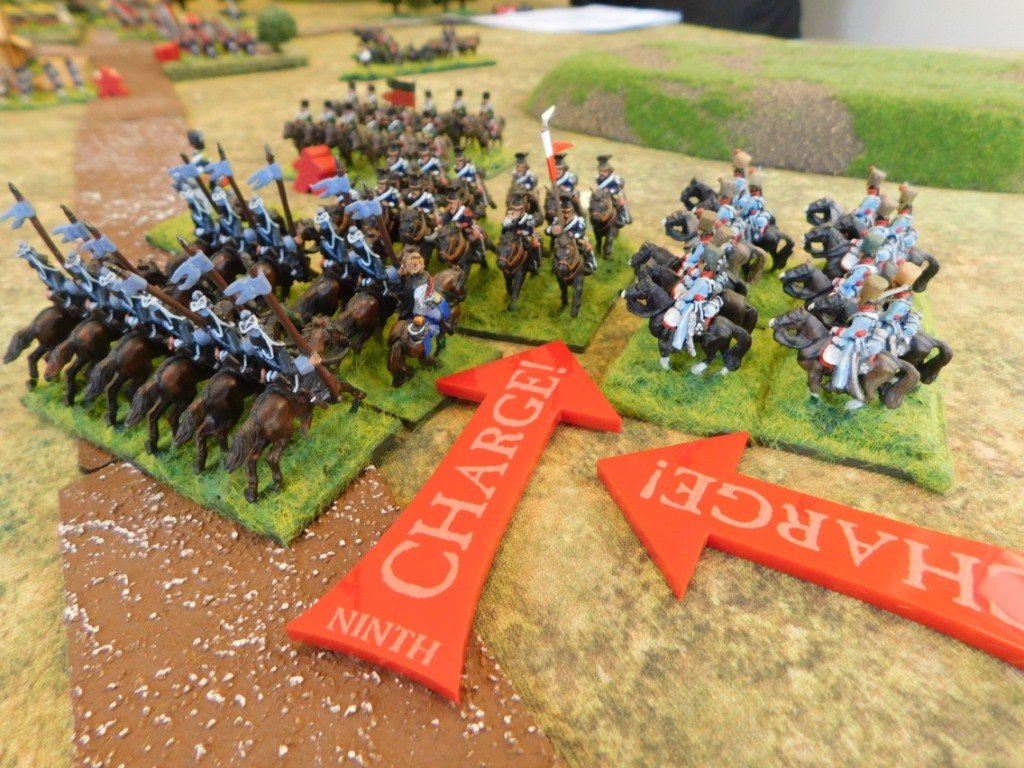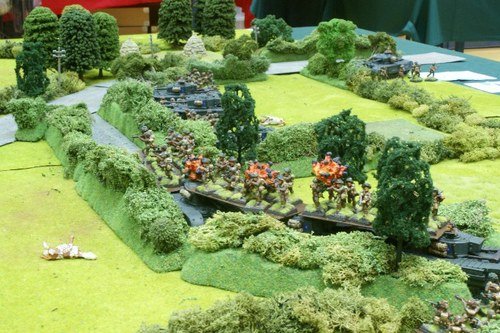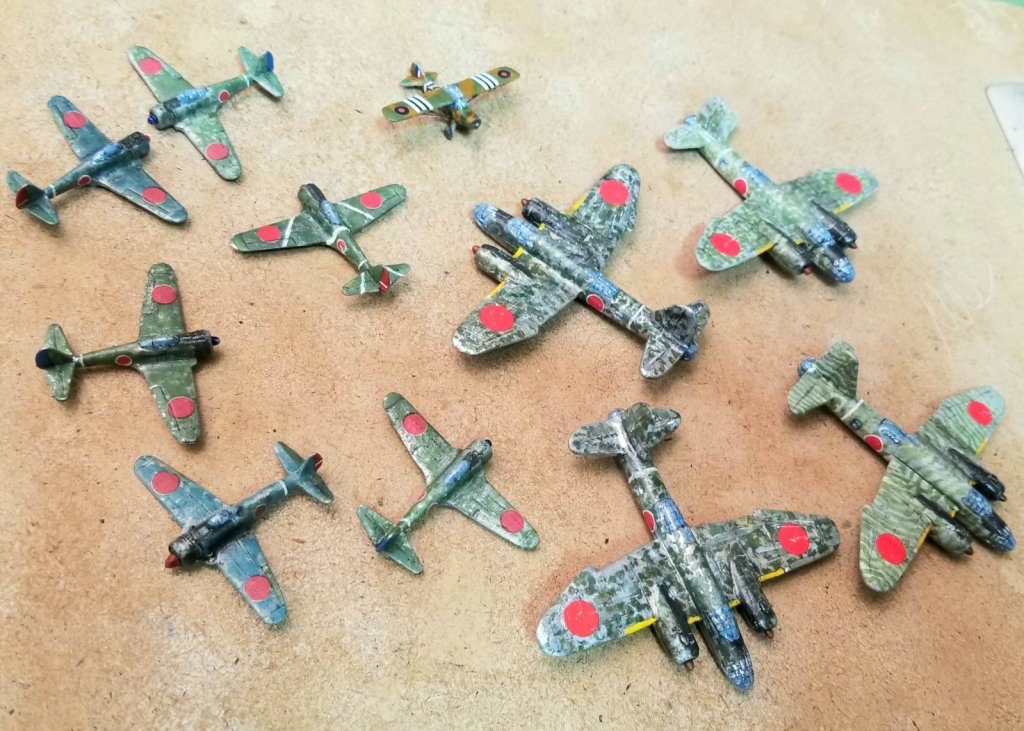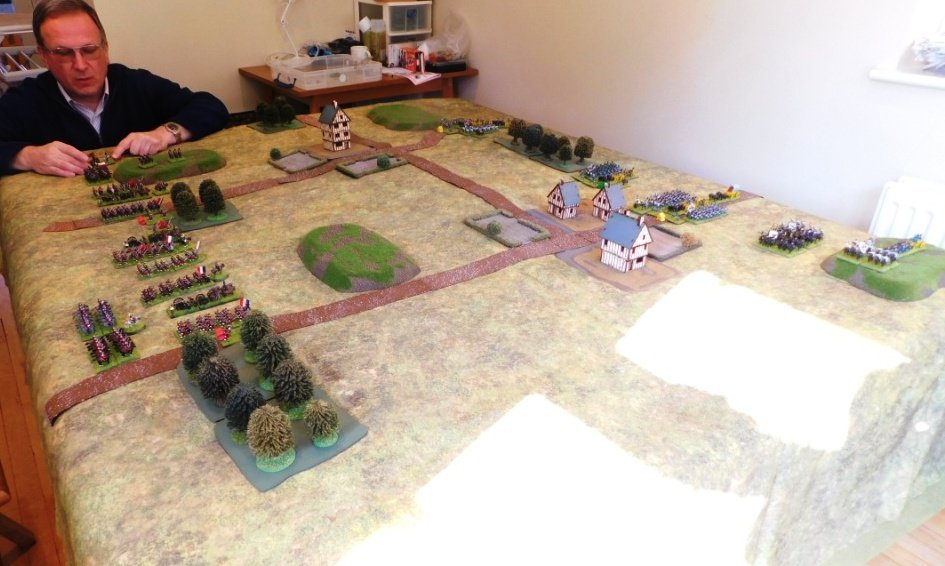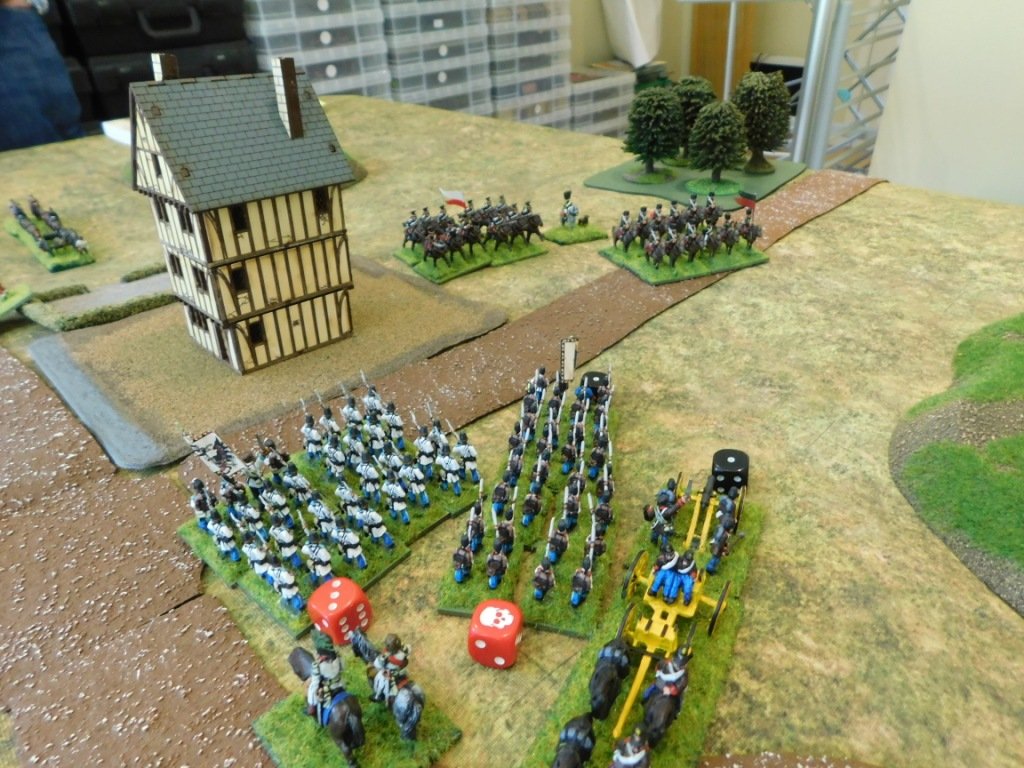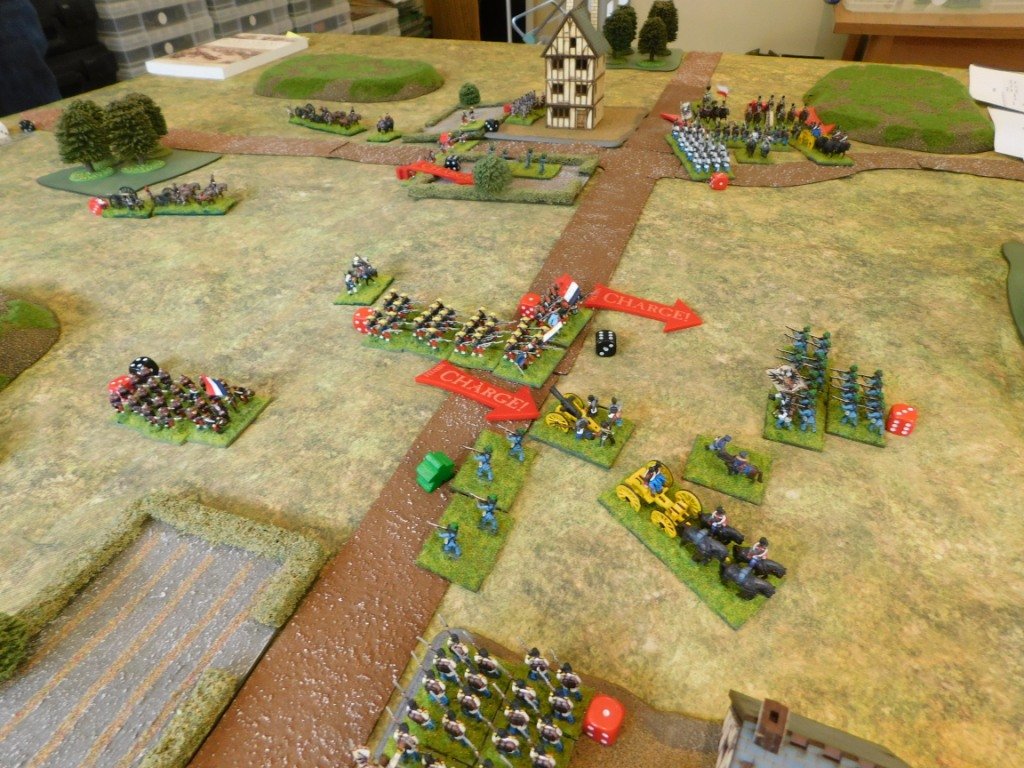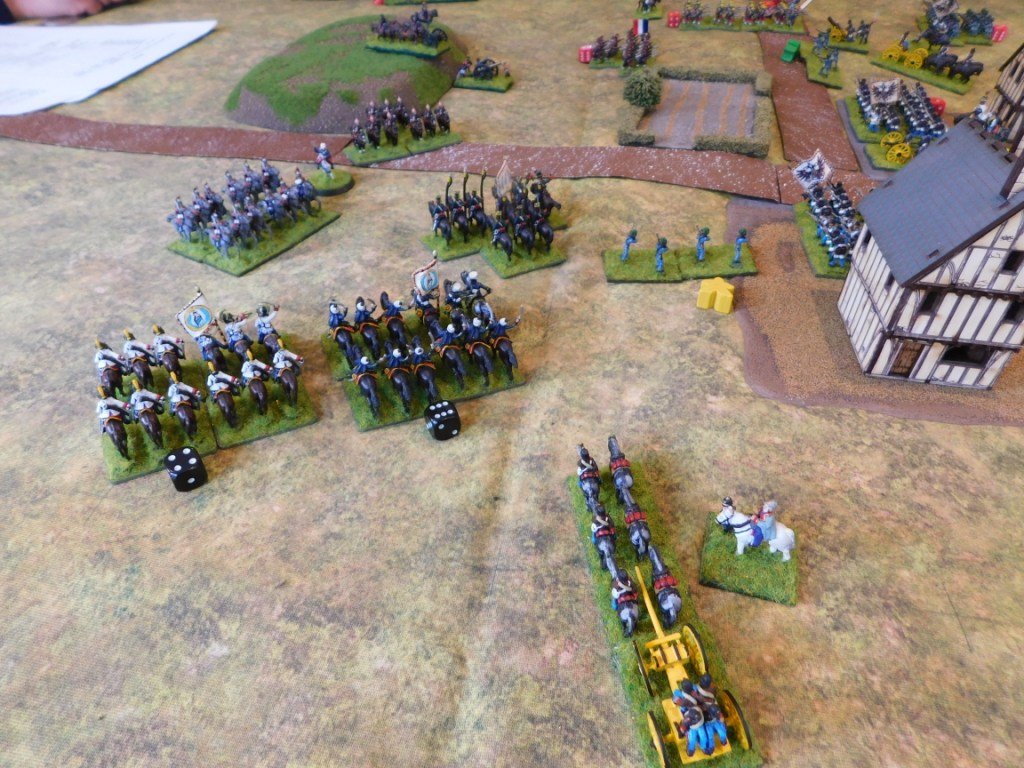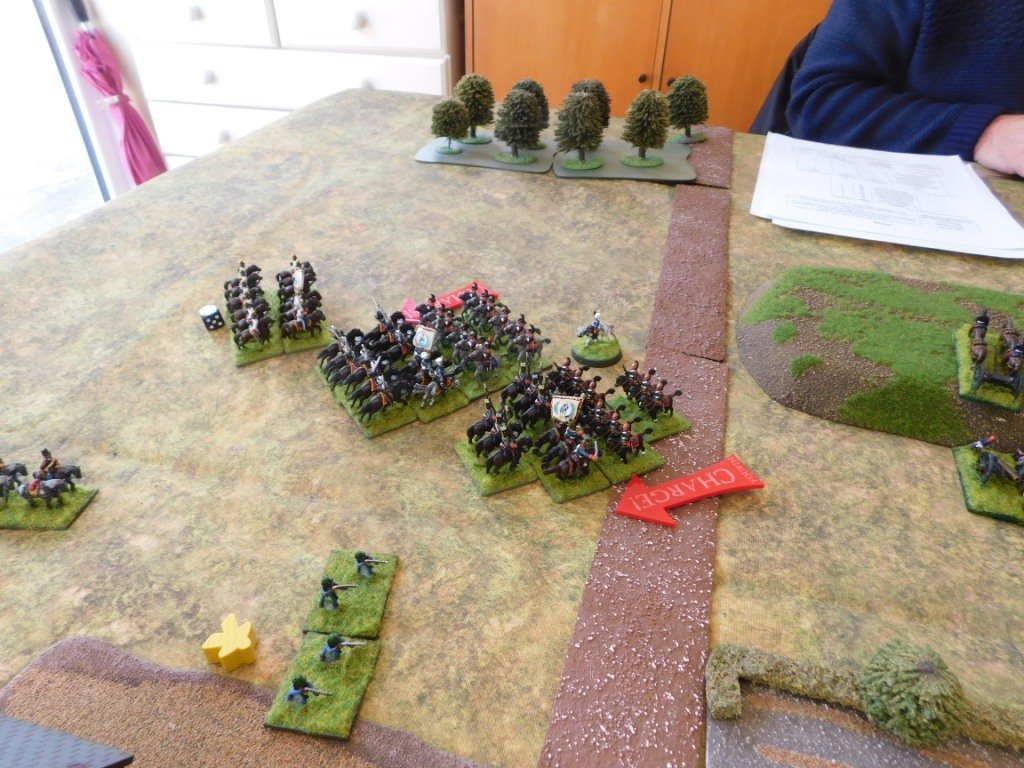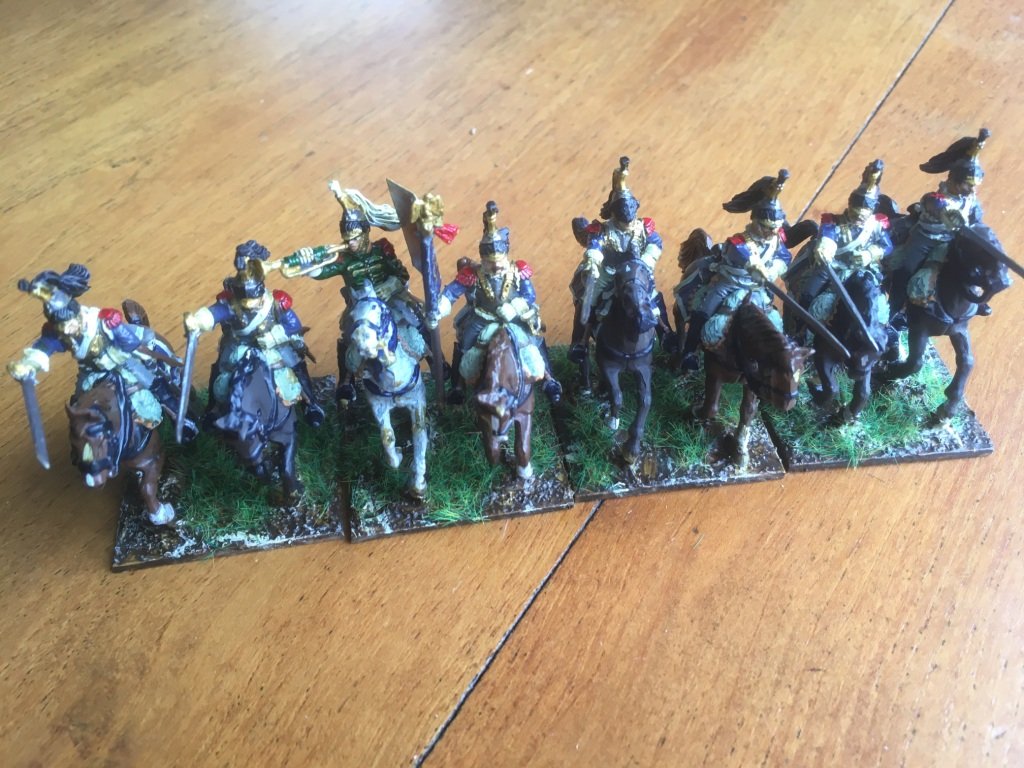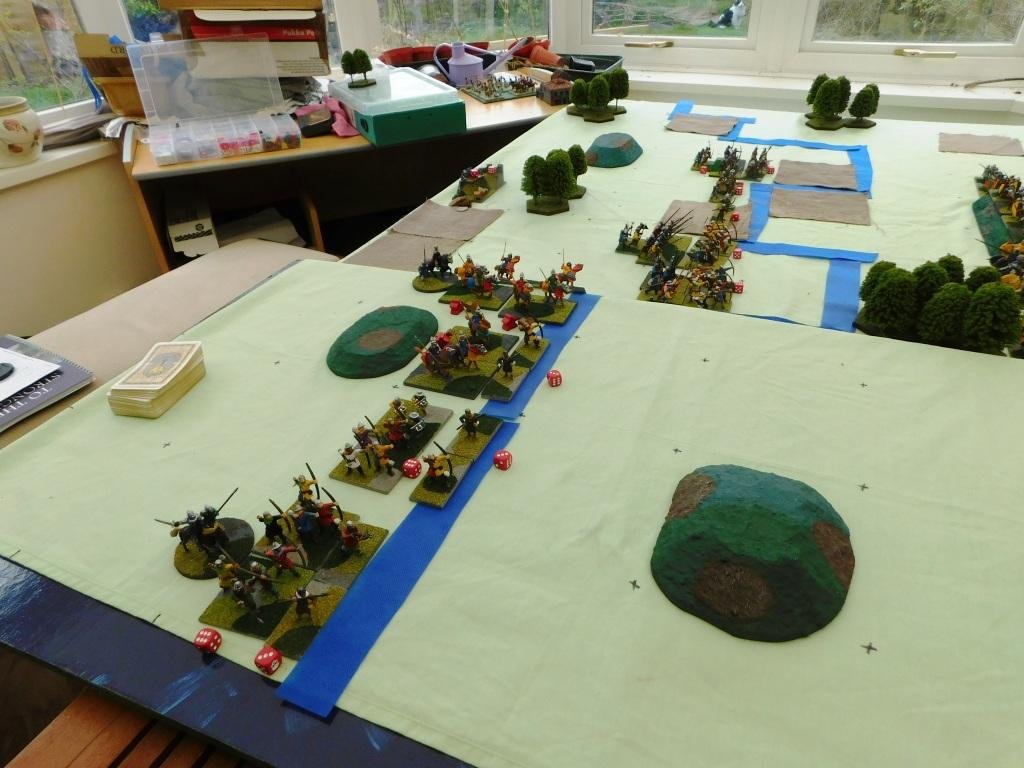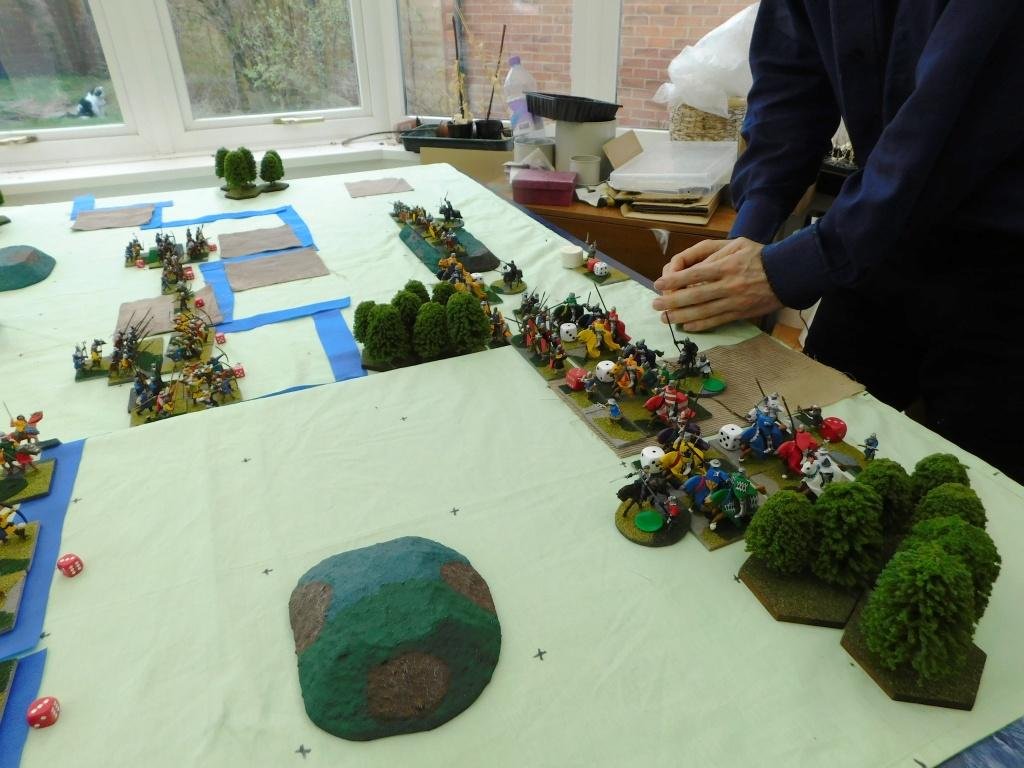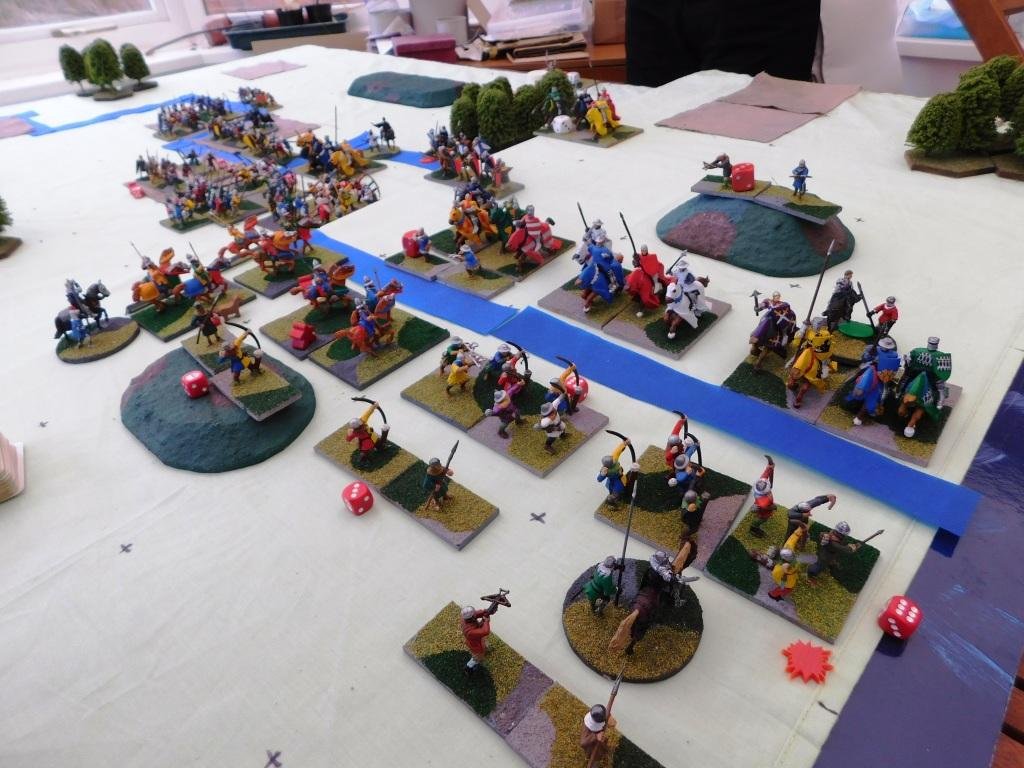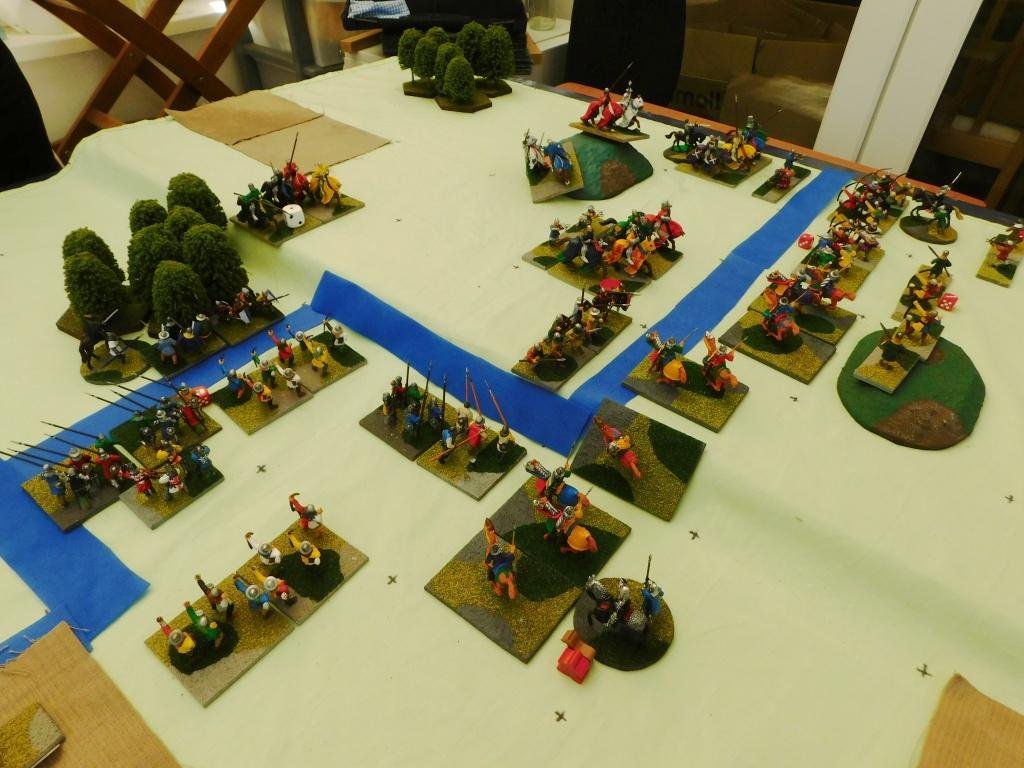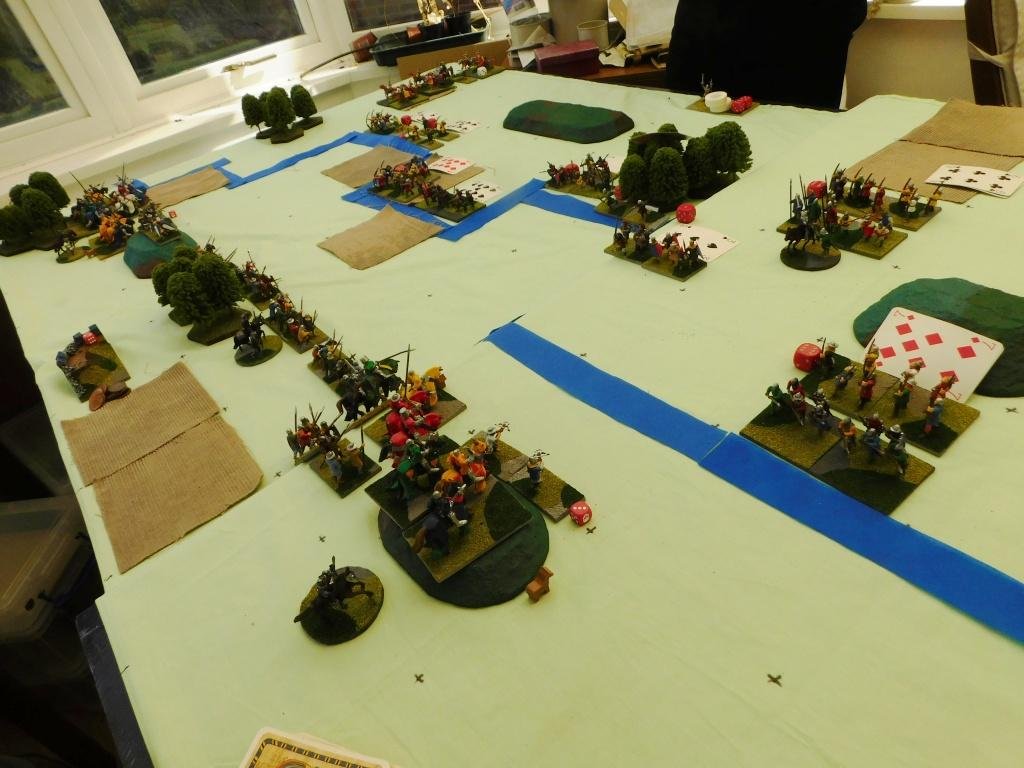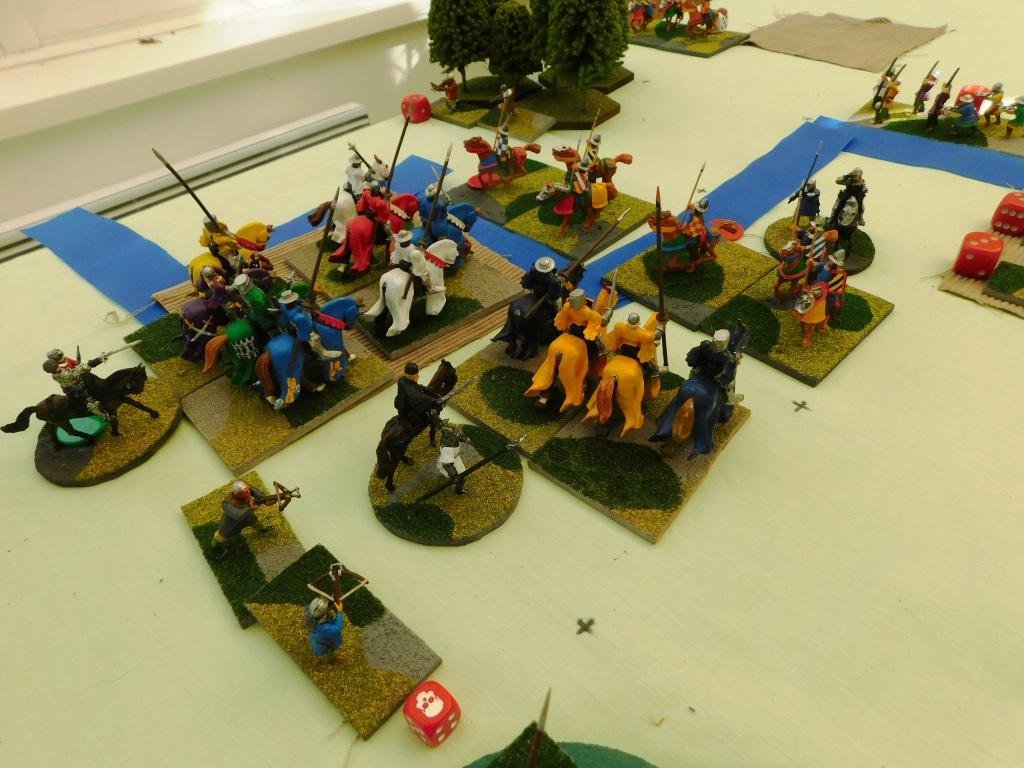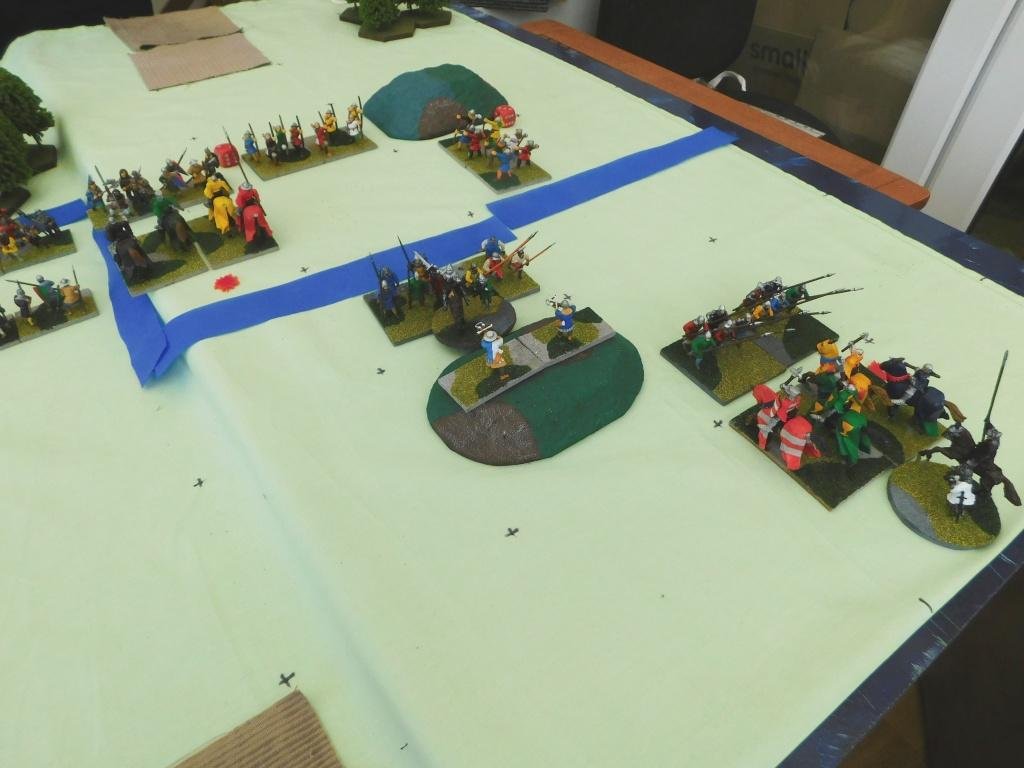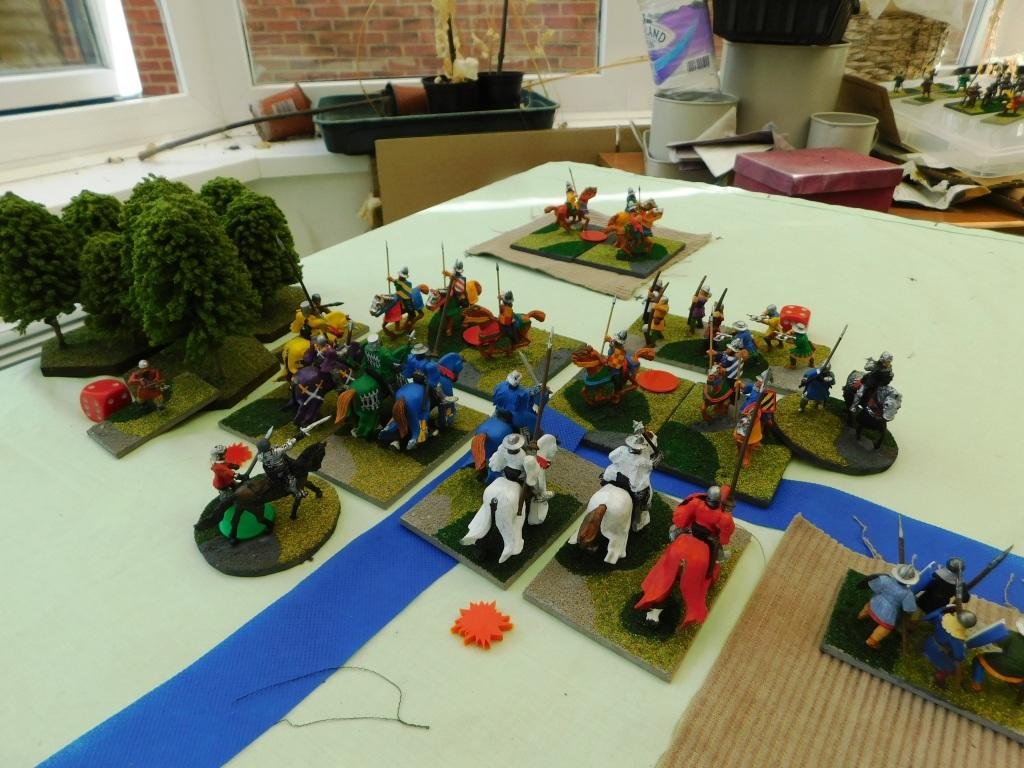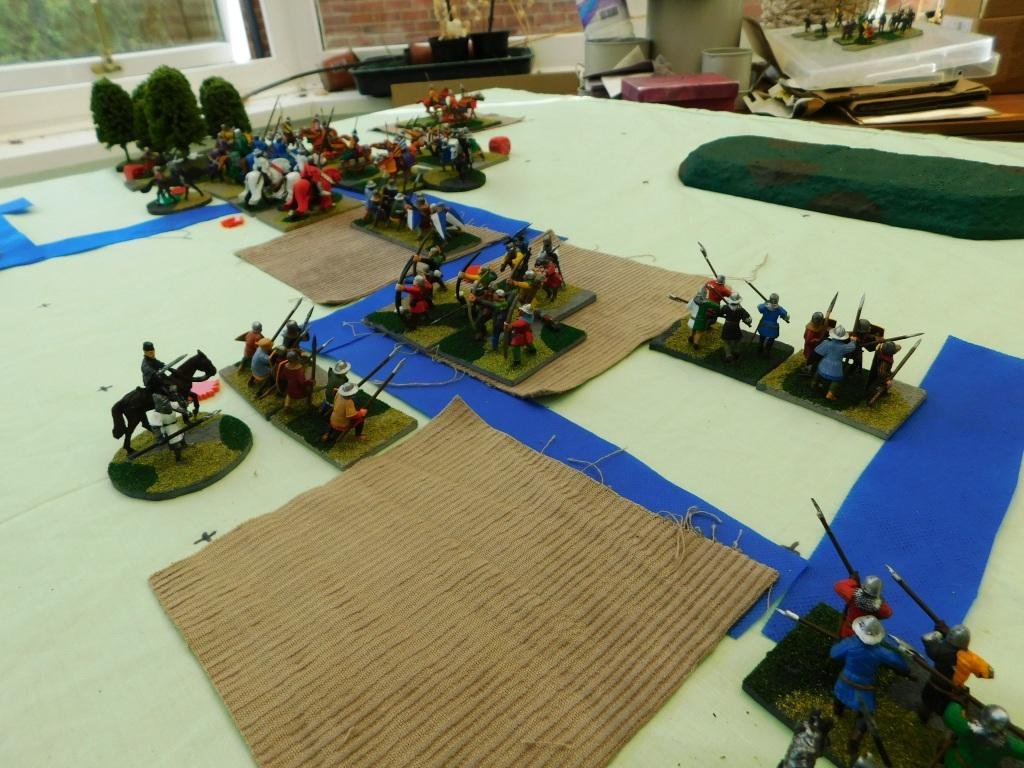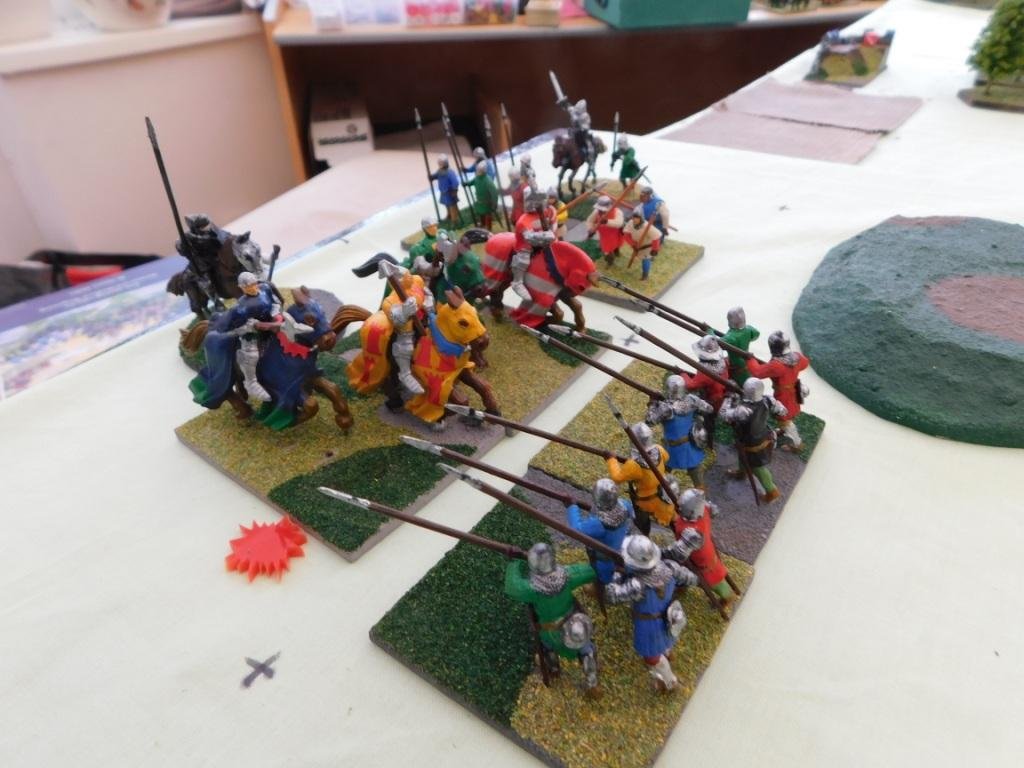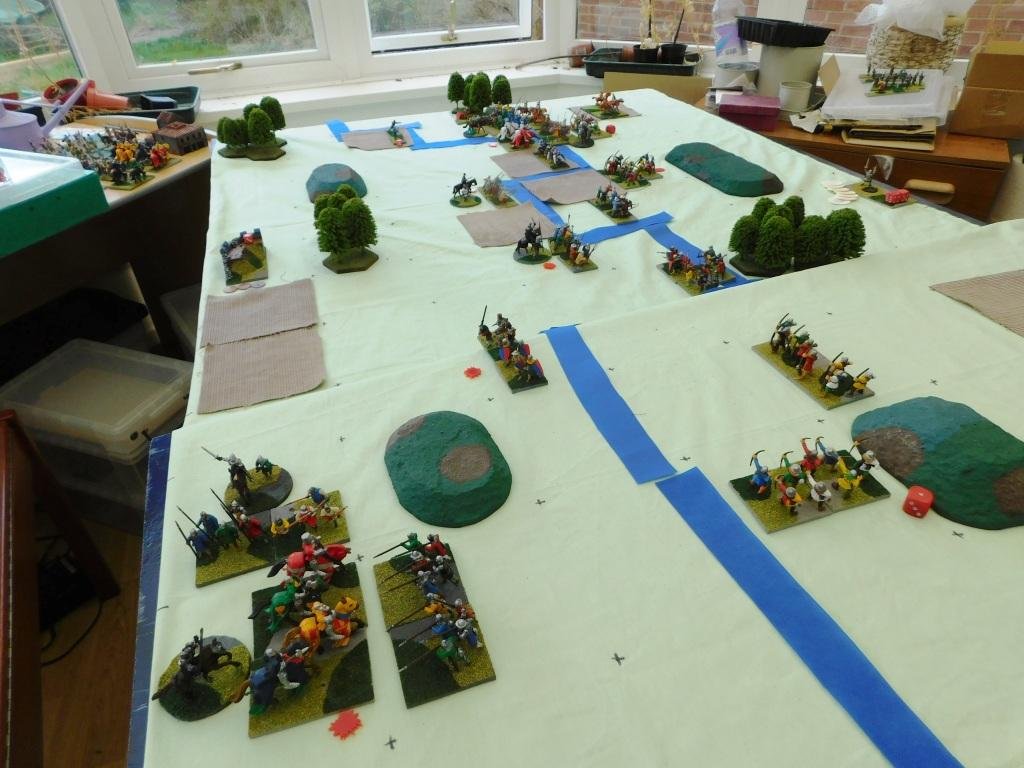The climax of the battle was now upon us: with each side having just one victory coin left i.e. the next kill would win the game…and with disordered units all round, and lights on the Akkadian side, there were plenty of opportunities for either side to win.
The initiative was with the Akkadians: no kills on their turn!
The Indians tried their best: no kills (phew!) but the Akkadians were wavering. If I didn’t pull off a win in my next turn, there was no way I was surviving another round of Indian attacks.
I went through all my obvious kill possibilities (my good morale units versus his disordered units, flank fire on the raw Indian cavalry etc) with no result. Oh dear: this was not looking good.
There was, however, one last thing to try. Veteran, but disordered, battle carts charging diagonally at the disordered Indian Maiden Guard.
The battle carts managed to make the difficult move into contact, but failed to hit the Guard. Oh no!
But what was this? Striding forward came an Akkadian hero (the chap under the blue parasol in the picture below) and smote the Maiden Guard with a cracking hit. Bevan and I held our breaths as his save card was turned: a five and therefore a fail. The Guard fled the field and I and the Akkadians had won the day!








